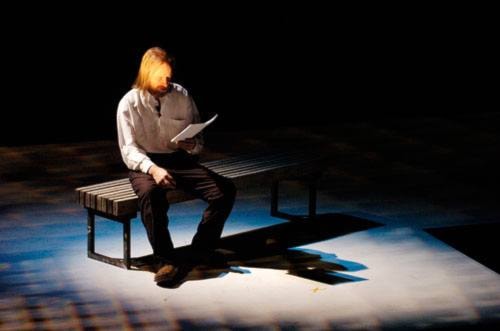On display in the Arts Underground this month is a watercolour painting of two polar bears.
But look closer and you’ll notice another endangered species - a map.
In an age of GPS and digital mapping, the big colourful charts are being used less and less.
But for Yukon artist Blair Thorson, maps can tell a story and are things of great beauty.
“Maps are something to be cherished; they’re a lot of fun and I always find that I like knowing where I am and where I’ve been,” he said.
“I always thought that it was a guy thing, that guys love maps. But I found out that girls do too.
“Everyone just seems to be drawn to them.”
Thorson has been painting on maps for the past five years.
The idea came to him after a long day of halibut fishing with friends in Skagway.
As a gift, Thorson wanted to paint a picture of his friend’s boat and mount it alongside a map of the area.
Then it occurred to him to paint the picture directly on the map itself.
“It was so well received by him that I did more and it just kind of went from there,” said Thorson.
The image and the map are always related in some way or another.
Old sternwheelers are painted onto maps of the Yukon River; a gold panning prospector is painted on a map of Colorado Creek, and a variety of arctic fauna are depicted on top of the regions where they normally roam.
Because watercolours are used instead of oil paint, the images don’t entirely block out the maps beneath and the colours of the charts glow through.
“I liked working with the different colours of the map - the greens, the browns, the blues,” he said.
The maps of the Yukon River are a sepia colour, giving the paintings of sternwheelers an antique look.
Coffee stains, pencil marks and folds and creases in the map become part of the artwork and tell part of the story.
Some of the maps are pretty old, printed in the ‘40s or ‘50s.
Thorson doesn’t worry too much about desecrating these old relics or about screwing up and ruining the map, he said.
SDLqLetting them go from my studio is the hardest part; it’s like saying goodbye to all of your friends.”
In some of the pieces, Thorson adds a third dimension by cutting out the depicted animal’s footprint and sinking it into the foam board the maps are framed upon.
Grizzly paws are particularly popular.
Maps are usually made of very thin paper, which makes painting on them a bit of a challenge, said Thorson.
“And if you hit a crease, then you might as well throw it away and start over.”
Thorson has traveled widely throughout the North working as a water surveyor for Environment Canada.
“I’ve had the good fortune to see a lot of the animals out in their natural habitat,” he said.
“I would carry a sketchbook with me all the time and fill those up.”
Thorson had a small collection of maps before he ever lighted on the idea of incorporating them into his art.
“I always had maps of the areas I worked in,” he said.
“Maps were always a necessity when you were working at the side of the river in the middle of nowhere.
“Now with the advent of GPS they’re not used as much.”
In the past, Thorson has rescued maps that Environment Canada was planning to take to the landfill.
The large map of the North, on which Thorson painted his polar bears, was saved from a similar fate.
While at the dump, Thorson’s friend Michael Svoboda discovered a box filled with rolled-up maps.
Thorson received a phone call from an excited Svoboda, asking if he wanted to take them.
This same dumpster-diving friend took the photo of the bears that Thorson based his painting on.
“Each one has a story like that, each has a story of its own,” said Thorson.
Many friends and people from across the country have started sending their unused maps his way.
He now has a collection of well over 2,000 Canadian maps.
He’s also been approached by some people who have a certain map that means something to them and would like a certain image painted over it.
For example, one hunter commissioned a picture of a moose on the area he likes to hunt.
Thorson has dabbled in other styles of drawing and painting and was even an editorial cartoonist for half a dozen years in Fort St. John.
But watercolour is the medium that has worked best for him.
Thorson sees himself continuing to paint in this style into the near future.
“I definitely know what I’m going to do in my retirement - I’m a couple of years away,” he said.
But he’s far from retiring his paintbrush.
“I still feel like every piece I do is the best one ever.”
Thorson’s exhibit, All Over the Map, will be on display at the Arts Underground until April 28.
For more of Thorson’s work, visit www.blairthorson.com.
Contact Chris Oke at
chriso@yukon-news.com
